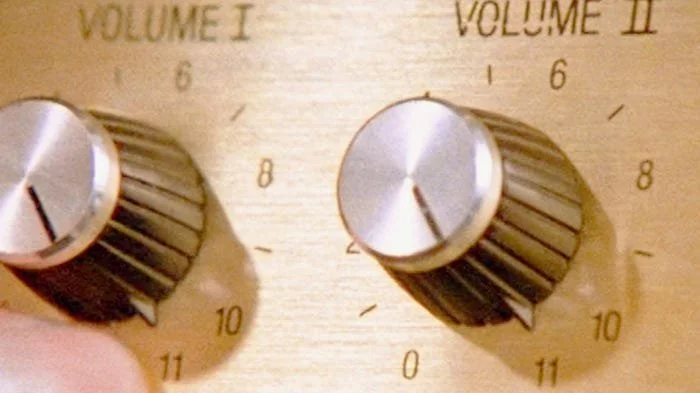Level Setting and Career Goals for VCs: What level are Midas List VCs actually performing on?
I find level setting to be one of the most difficult things to do around any task or skill. Just how good is good? What are the best people accomplishing? How do you measure it?
It comes up a lot with my coaching clients who aspire to be top VCs and are trying to figure out how to self-assess and goal set.
I figured the best way to go about answering would be to ask the best of the best. Over the last couple of weeks, I asked everyone who has been on the Forbes Midas List over the last three years what their activity and accomplishment actually looks like in the functional areas of the job.
Besides being “busy doing great deals and distributing cash to your LPs”, what are they’re actually doing to make that happen?
Just saying that you get on the list by doing great deals that exit is like saying, “The best pitchers in baseball are the ones that strike out the most batters.” That’s not really helpful to someone who is training to be a pitcher. If I told you that the people who strike out the most batters, on average, have 98MPH fastballs, which is 2% higher than the league average, that’s much more useful information. At least it would help young pitchers set a training goal.
While not everyone who can throw 98MPH can strike out major league hitters whenever they want, it sure does seem to help to learn how to throw that fast if you plan on doing that for a living at the highest level.
Luckily for aspirational baseball players, pitch velocity, spin rate, and just about every other aspect of playing baseball are highly quantifiable in real-time.
Venture capital is basically the complete opposite.
Actually, it’s even worse than that.
When you measure skews the analysis. Imagine if your past performance in baseball was subject to not a 12-18 month lag in measuring the true outcome. You throw a pitch and you don’t find out the speed for a year or even longer.
“That pitch you threw a year ago, that was 92. Oh and that one 99MPH you threw two years ago? Well, thanks to that 70MPH wayward duck you uncorked yesterday, we’re marking that one down to 82.”
Until you IPO, feeling like you’re good may just depend on what part of the fundraising cycle you’re taking a snapshot of your companies in. A lot of people don’t feel today as they did two years ago.
Meanwhile, you may have felt like your form—the things you were doing to throw a pitch—was the same as it was before—and perhaps even better. That’s how it feels when your hot deal from two years ago winds up running low on cash and gets into a pay-to-play round that wipes out the cap table.
“But I thought I was good!?”
You have the preparation and the best practices. You have interim performance. You have outcomes.
They’re not as highly correlated as you’d like—but without that initial and continuing activity done at a high level, your chances of top-tier performance decrease significantly.
So what do those activities actually look like?
Since I started coaching investors, especially non-partners and partners at emerging funds, I’ve been asked the same questions in all sorts of ways:
“What things should I be doing to be great?”
“What does it mean to be proficient?”
“What do I need to get better at?”
What I’ve been trying to do is to actually describe the level at which “top performance” is happening for all of the various facets of the job—things like reputation, screening, board participation, etc. What are these folks who wind up on the Midas List accomplishing day to day that differentiates them from the middle of the pack?
So I asked them. I got feedback from lots of VCs who have been on the Midas List to get feedback on what baseline activity and proficiency looked like and I got a ton of feedback.
Is the Midas List the be-all and end-all of the “best VC” list? No, of course not. There are lots of problems with the way it is put together, but until we get full transparency on venture performance, attribution, and return data, it’s what we’ve got.
I’ve summarized the descriptions in the table below, but a few trends stood out to me—my favorite being that it took a lot of work and wasn’t easy.
Roger Ehrenberg told me, “I was proud of my reputation and my results, but I sweated it all the time.”
Chetan Puttangunta from Benchmark responded by highlighting the sheer effort of one of one of his colleagues:
“My partner Peter Fenton is the best board director I’ve ever worked with. The thing that stood out to me about Peter was just the amount of preparation work he would do before every board meeting. It was comprised of not only fully reading/ digesting all the materials, but also doing an immense amount of primary research on the most important issues at hand. It was so impressive and that’s the level I aspire to constantly.”
I want to thank everyone who responded. Some of the folks I quoted below, but I also got great input from Jeremy Liew, Salil Deshpande, Mar Hershenson, and Rich Wong among others who took the time to look and give encouragement.
Great Teams vs Individual Greatness
Almost everyone who provided feedback said some version of, “No one is great at all of these things.”
Vinod Khosla told me, “Send me anyone that meets this criteria.” :)
Martin Mignot from Index echoed that sentiment. It’s “very very rare to find someone excelling at all of those, even in top performers in the industry” and Fredrik Cassel of Creandum said, “I'd be happy the day I can check half of the boxes here.”
Fredrik talked about how important teams are to winning the best deals—even for top brands.
“All deals worth doing are so incredibly competitive. Not saying it isn't helpful to have an easier path to get in front of the right people. But that the work - in our case including mobilizing the whole firm - needs to be done every time to win the trust of the entrepreneur.”
The Prepared Mind
Martin also mentioned the importance of timing, but I think his comment had more to do with being prepared enough to pull the trigger in those key moments.
“When I look at Index, Danny, Jan, Mike, Shardul or myself all have very different superpowers and ways to go about our jobs - but the one thing we have in common is the output of having been in the right conversation at the right time and pulling the trigger on some big decisions when they weren’t obvious or consensual.”
Saar Gur at CRV talked about finding your place and doing the work to be able to say “yes” when it counts.
“In some cases, people pick a sector before others that ends up creating the biggest alpha in the markets (crypto, fintech, etc). Others may pick a geography (ala China)…“
I don’t see how anyone could be early to a space and be able to pull the non-obvious trigger without doing a lot of work beforehand.
Mamoon Hamid from Kleiner put it this way:
“You've developed a prepared mind in the areas that you invest in that are rooted in how shifts in technology are creating massive opportunities. When you see something that aligns with your prepared mind worldview you are quick to jump on it.”
The Value of Firm Brand
Saar also told me that firm brand “is a major asset that gets reinforced with each win, hence the persistence of outperformance by the top names over time.” He added, “Individuals at these firms may be slightly better on average but I don't think they'd outperform to the same extent (or at all) in other firms,” which I thought was really fascinating.
Saar echoed this sentiment by sharing, “I do give a lot more credit to the folks who make the Midas list who are not at Benchmark, Sequoia… USV etc. - because it is a lot harder to do when you don't have the successes and brand.”
I think one thing that helps make these early, non-obvious bets in a space is having a firm with a track record of wins—one that is enough to carry you through to your next fund. If every single bet you make today is done with the weight of the firm’s next raise hanging in the balance, it’s unlikely that you’re going to feel comfortable taking bigger risks.
Standing Out as an Individual
When I asked Ann Miura-Ko about what she was doing to achieve her world class results, she advised people to, “Figure out ‘What's your different’ - hard to stand out when you're just like everyone else.” For her, it was launching new classes and teaching those at Stanford in the School of Engineering. She’s also quite technical with a PhD in math modeling and cybersecurity.
This was a fun exercise—one that I also did for “MVPs”—Minimum Viable Principals. These are the early career VCs who can still write a check, but whose track record is largely ahead of them. I asked a bunch of recently minted and mid-career VCs who made the leap from Principal to Partner when they first “felt like a VC” and capable of their job. I’ll post that soon, so find that subscribe box in either the pop-up or at the bottom of this page. If you have thoughts on any of the boxes below for newly minted checkwriters, drop me a line.
Finally, without further ado, here’s the template I came up with for what it looks like to put in Midas List level work for the following facets of being a VC. Obviously, there’s room for disagreement and addition.
I’d love to hear your comments and add to this and to do a deeper dive on how you actually get to this level tactically speaking.
| Midas List | |
|---|---|




